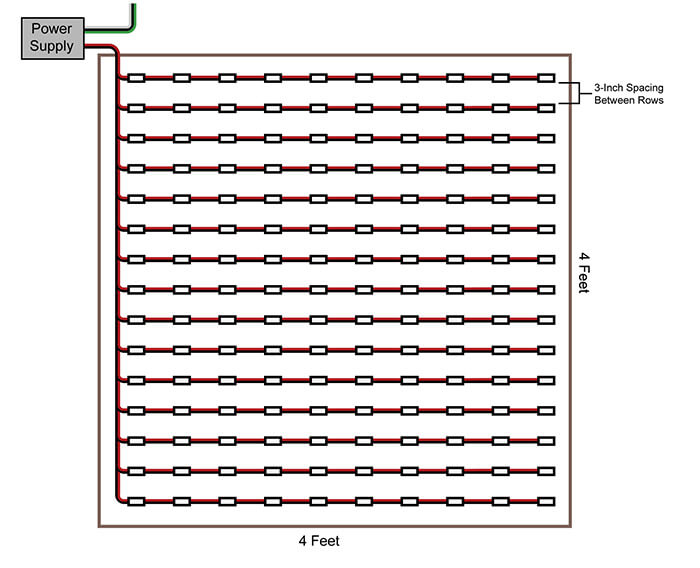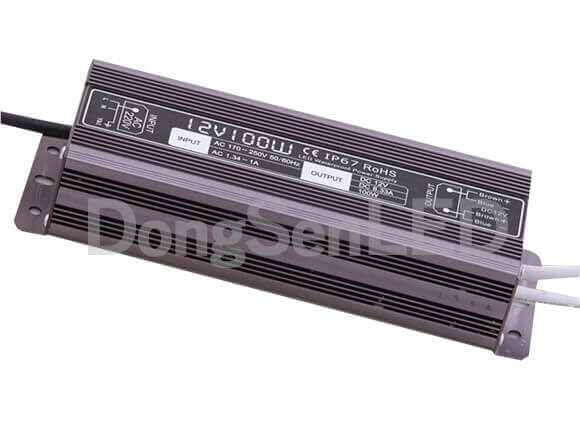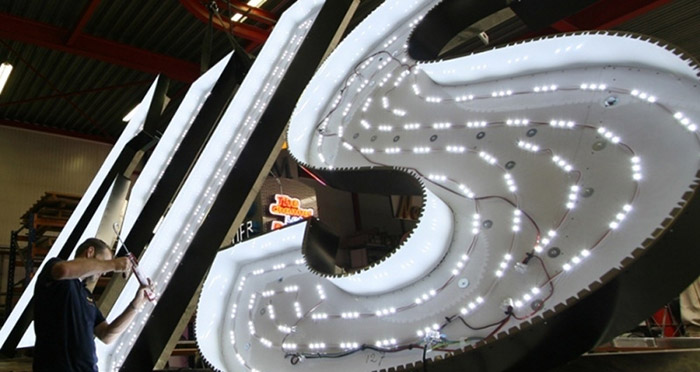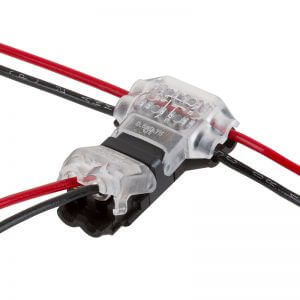LED Module
Easy step for LED Sign Lighting

“A business with no sign is a sign of no business “
The Illuminate LED signage provides years of illumination with low energy costs. LED sign modulesare the perfect way to illuminate signage, channel letters, display cases, and Glow sign board, Lighting box. Single-color and RGB LED modules are available in many different size to suit individual needs. Modules made with 20 pcs to 50 pcs a chain, every single module could be cuttable, Adhesive 3m tape on its back and with screw hole, installation is simple. In fact, the toughest part of LED sign module installation is determining how many LED modules are needed for your application.
Here we take an example of 4-by-4-foot LED sign, use the single color injection led module, The materials request as below:
Materials:
(150) Injection LED Sign Modules(15 rows of 10)
120-Watt Power Supply
18-Gauge Wire
(15) Dual-Channel T-Tap Wire Splice Connectors
(15) Double-Sided Foam Pads
For complete light coverage across your sign, it is recommended that LED module rows are spaced 3 inches apart from the top to bottom of your sign. The diagram and steps below demonstrate how to install LED sign modules on a 4-foot square sign.

1. First, measure your sign. Although we recommend spacing module rows 3 inches apart, it’s ultimately up to you. If you want a brighter sign, place them closer together and vice versa for a dimmer sign. Also there are many different power LED Modules for your choice for the different size signage.
With the recommended 3-inch spacing, a 4-foot square sign would need 150 modules (15 rows of 10). Again, the quantity of modules needed is based on many factors and can differ.
These LED sign modules are available in custom lengths of up to 20 modules per strand. Order 60 feet (4 feet x 15 rows) of stranded modules, and cut the strand after every 10 modules. Each strand can be cut to make two rows.
2. Next you’ll need a power supply that’s rated for the combined wattage of all sign modules. To ensure that you don’t over work the power supply, confirm that the total wattage of your modules is at least 20 percent less than the power supply’s rated wattage.

An easy way to calculate this is to multiply the total wattage of your combined lighting by 1.2. In the 4-foot sign diagram, there are 150 modules with a current draw of 50 milliamps (mA) each. Since current draw is given in milliamps, multiply that number by voltage and move the decimal 3 places to the left to get wattage. This module consumes 50 mA and has 12 VDC operation, so it consumes 0.6 watts (50 x 12 = 600). Next, multiply 0.6 by 150 to get a combined wattage of 90 and multiply that number by 1.2 (90 x 1.2 = 108) to determine which power supply you’ll need. Since the result was 108, you will need at least a 120-watt power supply.
3. Next on the list is wire to connect all your sign module stands to the power supply. For a 4-foot sign, you’ll need 4 feet of 18-gauge two-conductor wire to serve as your main line plus enough to cover the distance between your power supply and where it will be wired into an electrical system. You’ll also need dual-channel T-tap wire splice connectors for an easy connection to your main line.
Before you begin working on your sign, turn off power to the area.
4. Use a tape measure or ruler to plot your row spacing. Leave space on one side of the sign for your module-to-main-line connections. Mount the sign modules using their double-sided adhesive and/or screw holes.

5. Insert the end wires of each LED sign module row into the T-tap splice connector, and clamp the other end of the connector onto the main line. The splice connectors eliminate the need to strip wire insulation.

6. Use double-sided foam tape to secure each T-tap splice connector to the inside of your sign.
7. Reattach your sign’s front cover and Connect the main line to your power supply, wire the supply into your electrical system, and restore power to the area.